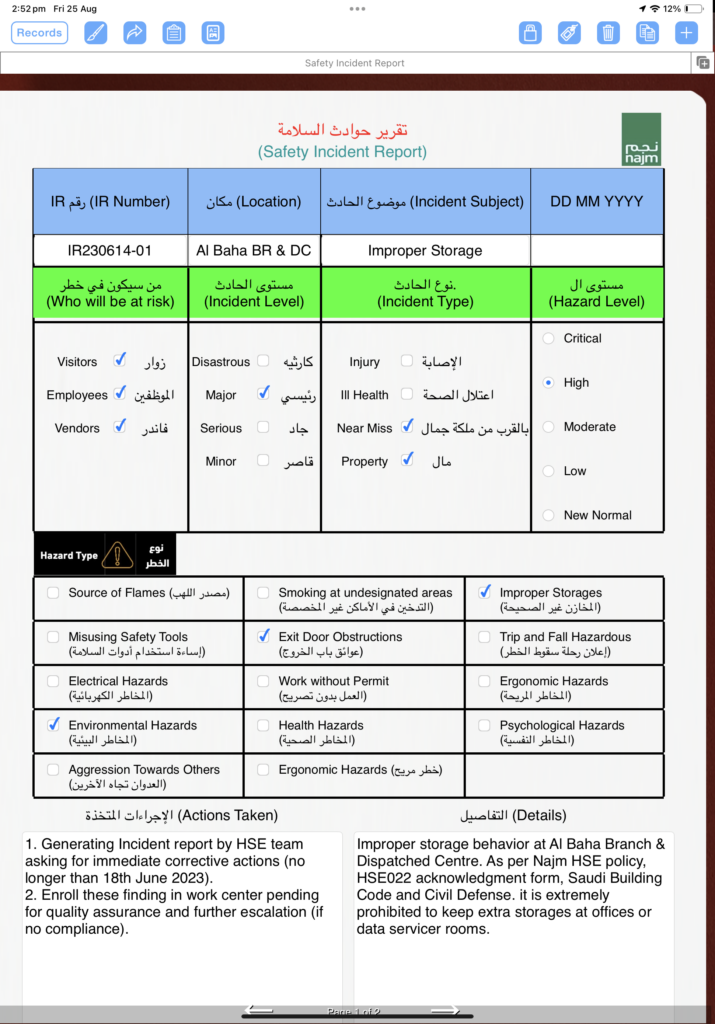If you have a form that is used by people from different countries or cultures, it is important to design your forms to be used in more than one language. This will make it easier for users to fill out your forms and get the information they need.
There are a few different ways to design forms for multiple languages. One common approach is to include both languages in the layout of the form. This can be done by displaying the text in both languages next to each other.
Another approach is to create separate forms for each language. This can be more work, but it gives you more control over the layout and design of each form.
Below is a sample form that was created to address this bilingual issue. Both the English and Arabic languages are supported. Each field on the form displays the text in both languages. That way someone who is bilingual would be able to read and understand what the individual is communicating regardless of the language.
No matter which approach you choose, there are a few important things to keep in mind:
- Use clear and concise language that is easy to understand in both languages.
- Use the same terminology throughout the form.
- Use high-quality translations that are accurate and natural-sounding.
- Test your forms with users from different countries or cultures to make sure they are easy to use.

